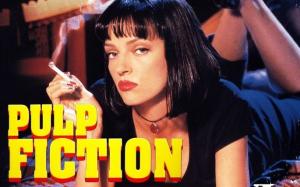Margarita de Rubén Darío: Analysis and literary figures of the poem
The poem "Margarita" is authored by Rubén Darío, one of the most prominent writers of Latin American literary modernism. It is a poem about love and the pain of losing a loved one.
The poem is in Profane prose and other poems, published in 1896, a work attached to modernism, a literary trend that at that time was on the rise and was proposed the renewal of Spanish literature with its precious language, its formal rigor and its taste for the exotic and the cosmopolitan.
Daisy flower
In memoriam ...
Do you remember you wanted to be a Margarita
Gautier? Fixed in my mind your strange face is,
when we have dinner together, on the first date,
On a night that will never come back
Your scarlet lips of cursed purple
they sipped the champagne from fine baccarat;
your fingers peeled off the white daisy:
"Yes... no... yes... no ..." and you knew he adored you already!
Then, oh flower of Hysteria! You wept and laughed;
your kisses and your tears I had in my mouth;
your laughs, your fragrances, your complaints were mine.
And on a sad afternoon of the sweetest days,
Death, the jealous one, to see if you loved me,
Like a daisy of love it defoliated you!
Analysis of the poem
"Margarita" is an elegiac poem written from the pain and memory of the loved one. The poetic voice addresses her in the second person, referring to the sweet and happy moments lived in her company.
Moments such as the first date are alluded to, the first shared joys, typical of the times of love dazzling, which are later contrasted with the feeling of emptiness and loss, of grief and pain, which are mentioned in the final lines, where death is represented by the metaphor of the daisy flower shed by death.
The title of the poem, for its part, has a certain ambiguity. On the one hand, it evokes the image of the daisy flower that is leafless in search of an answer, and on the other, it brings to mind the character of Margarita Gautier, the main figure of the novel. The Lady of the Camellias, by Alexandre Dumas Jr., who will die, after various love swings, due to a long illness in solitude.
Furthermore, to reinforce the elegiac tone, the poem bears an epigraphic inscription, “in memoriam”, which indicates that it is dedicated to the memory of the deceased person.
Verse type, rhyme and meter
The poem is written in Alexandrian verses of major art, of fourteen syllables. It uses stanzas of four lines with crossed consonant rhyme: ABAB, also known as serventesios. As such, it is a poem of great melody, in which the poetic voice is expressed in an appellative tone, in the second person, addressing the lover.
Rhetorical figures
Epithet
In the epithet, the noun is adjective to highlight some of its characteristics. For example:
- "Your strange face."
- "Damn purple."
- "Fine baccarat".
- "Blanca margarita".
Hyperbaton
The hyperbaton is the rhetorical figure in which the normal order of the elements in a sentence is altered for reasons of expressiveness. For example:
- "Fixed in my mind your strange face is."
- "Your kisses and your tears I had in my mouth."
- "Like a daisy of love, it defoliated you!"
Rhetorical question
In the rhetorical question, the poetic voice asks a question that is not necessarily answered. For example: "Do you remember you wanted to be a Margarita / Gautier?"
Simile
The simile is a comparison that is established between two images and that is introduced by a relational element. For example: "like a daisy of love, it defoliated you".
Metaphor
As a metaphor, the relationship established between two concepts or ideas is known through a subtle analogy. For example: "your scarlet lips of cursed purple."
Synesthesia
Synesthesia is a figure in which different sensations (auditory, olfactory, visual, gustatory, tactile) are mixed in an image. For example: "Sweet days."
Apostrophe
In the apostrophe, the poetic voice questions or addresses another person or being. For example: "oh flower of Hysteria!"
Anaphora
Anaphora is the repetition of an element at the beginning of several lines in a row, in order to give the poem a certain characteristic rhythm. For example: "Your kisses and your I had tears in my mouth; / your laughs, your fragrances, your complaints, they were mine. "
Encirclement
The overlapping consists of leaving a phrase straddling two verses, so that the natural morphosyntactic pause does not coincide with the end of the verse. For example: "Do you remember you wanted to be a Margarita / Gautier?"
See also: Night Poem by Rubén Darío.
About the Author
Rubén Darío, the literary pseudonym of Félix Rubén García Sarmiento, was born in Nicaragua in 1867. He was a poet, journalist, and diplomat. He is considered the greatest exponent of Hispano-American literary modernism., and one of the most influential poets of the last century in Hispanic letters. In his literary work, the poetry books stand out Blue (1888), Profane prose (1896) and Songs of life and hope (1905). He died in Nicaragua in 1916.

Literature professional, graduated from the Universidad de Los Andes. He is passionate about literature, history and philosophy. He has worked creating, writing and proofreading in publishing, advertising, journalism and digital content since 2008.

